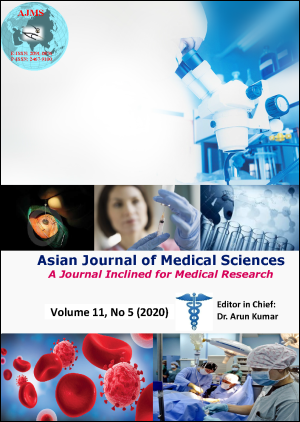Embryological and surgical considerations of absent infra-renal part of inferior venacava and left renal vein
Keywords:
Anomalous, Embryology, Inferior Vena Cava (IVC), SurgeryAbstract
Background: Development of inferior vena cava (IVC) is a complex process that involves the anastomoses between three pairs of embryonic veins. Specific permutations exist in the venous plane of the abdomen and pelvis resulting in variations such as single left IVC, double IVC, and left renal retroaortic vein. Anomalies of the inferior vena cava and renal veins occur infrequently but may contribute to serious morbidity throughout surgical exploration if unidentified. Most anomalies remain asymptomatic until surgical intervention or clinical presentation with thromboembolic complications.
Aims and Objective: Our research is aimed to link embryology with developmental disorder and the complications associated with the anomalous vessels in the field of surgery.
Materials and Methods: Ten IUD fetuses (ranging from 20 weeks to term fetuses) were collected from the O&G department of the college and injected locally with dilute formalin and placed in containers filled with formalin. Dissection of the fetuses was done to identify congenital anomalies.
Results: The external appearance of the 28-week-old fetus showed no gross anomaly. Examination abdominal cavity showed absent infrarenal segment of IVC and left renal vein. The right renal vein was seen running a long course to the left side with tributaries of lumbar veins and was seen continuing as the left femoral vein medial to the femoral artery. Segments of suprarenal and renal IVC were present.
Conclusion: Correlating anomalies and variations of IVC and its tributaries to embryology. However, understanding of such anomaly is necessary to avoid significant diagnostic pitfalls and in preoperative surgical
and radiological intervention planning.
Downloads
Downloads
Published
How to Cite
Issue
Section
License
Authors who publish with this journal agree to the following terms:
- The journal holds copyright and publishes the work under a Creative Commons CC-BY-NC license that permits use, distribution and reprduction in any medium, provided the original work is properly cited and is not used for commercial purposes. The journal should be recognised as the original publisher of this work.
- Authors are able to enter into separate, additional contractual arrangements for the non-exclusive distribution of the journal's published version of the work (e.g., post it to an institutional repository or publish it in a book), with an acknowledgement of its initial publication in this journal.
- Authors are permitted and encouraged to post their work online (e.g., in institutional repositories or on their website) prior to and during the submission process, as it can lead to productive exchanges, as well as earlier and greater citation of published work (See The Effect of Open Access).




